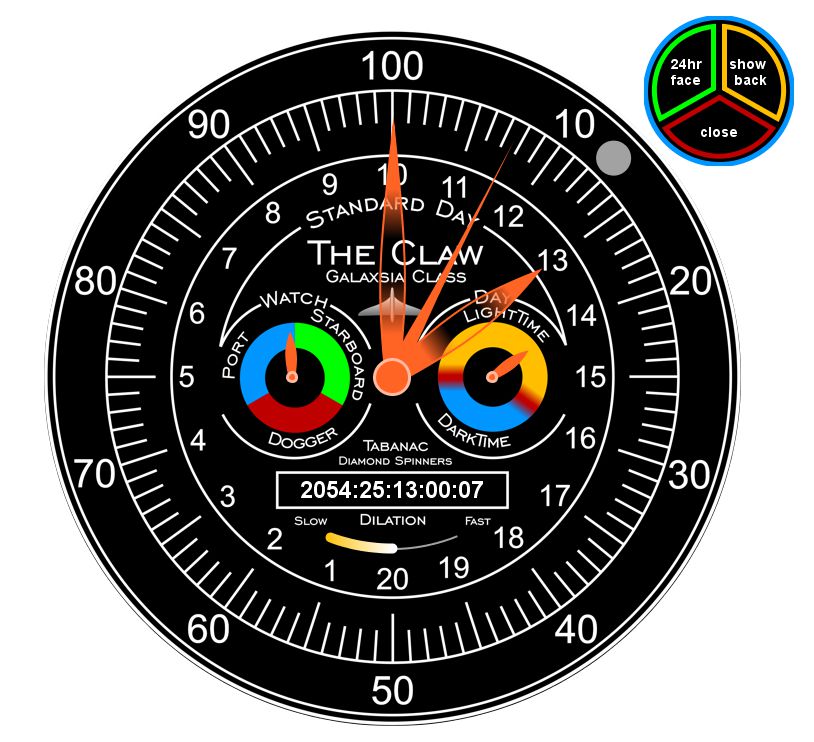The Science of Orlando Jax
Time II - the Claw Chronometre

Supplied: NASA, ESA, and L. Bedin (STScI)
The truth is life aboard a Pirate Spaceship must be pretty dull. If you're not fighting somebody, or planning a raid; if you're not at a beach somewhere enjoying some R&R, then what is there to do when you're stuck in a big spun diamond ship in deep space? The closest equivalent on Earth would probably have to be the sailors in a nuclear missile submarine. As far as I can tell they move around the world, submerged for periods of up to six months at a time. That must be challenging - no sunlight, recycled air and no real sense of night and day. Apparently some boats operate on six hour watch cycles. This lead to me to think again about ship time - the time they would keep on The Claw. Our concept of a day is only relevant on Earth - what time cycles would you keep in deep space? Is the idea of a day and night time useful? I tried to answer these questions by designing The Claw Chronometre - the clock that Orlando Jax uses to run his ship.

This clock operates on the idea of a standard day as we discussed before. There is a ship's light-time and dark-time, and a ship's watch dial - watch as in "to stand watch". I created it so that the watches (Port, Starboard, Dogger) drift out of sequence with light-time and dark-time. There is also a time dilation indicator. In real space this would have to take into account Lorentz Einstein's time-space laws. In my version it simply indicates when time appears to be going fast or slow - you know those afternoons which just seem to drag on?
I've built this in Java and you can download it from here.